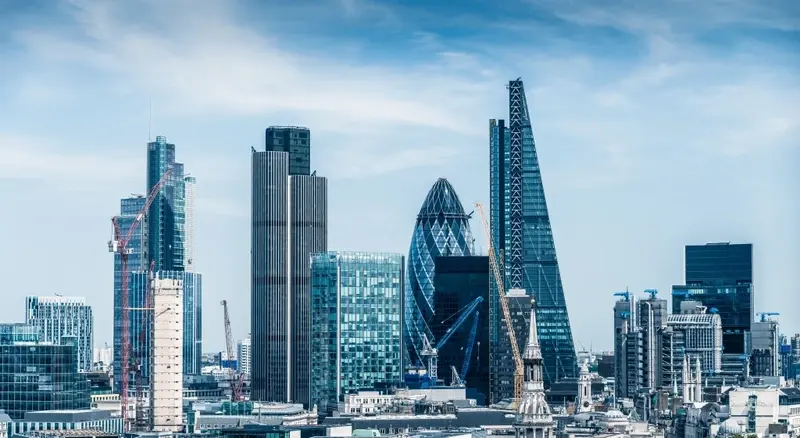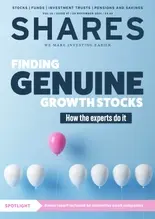
Stock prices in London were mixed on Thursday morning after Bank of England Governor Andrew Bailey hinted at a more aggressive path for interest rate cuts, while also showing concern over the situation in the Middle East.
Escalating tensions between Iran, Israel and militant Lebanese group Hezbollah continue to affect commodity prices.
In an interview with the Guardian, Bailey said he was watching developments in the Middle East ‘extremely closely’ and that there were limits to what could be done to prevent the cost of crude rising if things ‘got really bad’.
Bailey also held out the prospect of the bank becoming a ‘bit more aggressive’ in cutting interest rates provided the news on inflation continued to be good. ‘I think the economy has come through the shocks of the last five years better than many of us feared,’ he added. ‘So there‘s a base there to develop.’
Shortly after the interview was published online, the Guardian said, the pound fell by nearly a cent to a two-week low as traders reacted to the hints of a more activist approach to reducing the cost of borrowing.
The FTSE 100 index opened up 0.1 points, almost flat, at 8,290.96. The FTSE 250 was up 11.07 points, 0.1%, at 20,794.85, and the AIM All-Share was down 0.22 points, almost flat, at 734.08.
On the FTSE 100, Tesco gained 1.9%.
The retailer reported that its net profit gained in its first half as cost pressures eased for consumers and companies.
Pretax profit jumped 20% to £1.1 billion in the six months to August 24 from a year earlier with sales rising as inflation cooled, Tesco said in a statement.
Tesco also lifted its interim dividend 10% to 4.25p from 3.85p.
Looking ahead, the firm is guiding for full-year retail adjusted operating profit of £2.9 billion, up from ‘at least £2.8 billion’ previously.
The Cboe UK 100 was slightly lower at 829.56, the Cboe UK 250 was flat at 18,238.67, and the Cboe Small Companies was up 0.4% at 16,849.12.
On the FTSE 250, SSP lost 1.0% despite predicting an earnings boost.
The Upper Crust owner said its fourth-quarter revenue increased 15% at constant currency annually, while like-for-like sales increased 6%.
For its full year ended September 30, the food and beverage outlet operator estimates that revenue increased 17% annually to £3.5 billion, with operating profit rising approximately 30% to between £210 million and £220 million.
In European equities on Thursday the CAC 40 in Paris was down 0.7%, while the DAX 40 in Frankfurt was down 0.6%.
The pound was quoted at $1.3163, lower compared to $1.3271 at the equities close on Wednesday. The euro stood at $1.1037, down against $1.1046. Against the yen, the dollar was trading at JP¥146.41, up compared to JP¥146.06.
In Asia on Thursday, the Nikkei 225 index in Tokyo was up 2.0%. The Hang Seng index in Hong Kong was down 0.2%. The S&P/ASX 200 in Sydney closed up 0.1%.
Markets in mainland China were closed for National Day.
In the US on Wednesday, Wall Street ended higher, with the Dow Jones Industrial Average up 0.1%, the S&P 500 marginally higher and the Nasdaq Composite up 0.1%.
Brent oil was quoted at $74.79 a barrel early in London on Thursday, up from $74.05 at the London equities close on Wednesday.
However, Swissquote’s Ipek Ozkardeskaya commented that while ‘some bullish voices are emerging, putting the $100 per barrel target back on the table’, she believes ‘we will hardly see the barrel of US crude go past the $88-90pb range in case of badly deteriorating situation in the Middle East, because OPEC is preparing to call the end of its production restrictions by the end of the year...And second, around half to two-thirds of the Iranian oil goes mainly to China – which is not concerned by the sanctions.
‘The only thing that could materially extend crude oil’s topside is if the US-backed Israel attacked the Iranian oil facilities. That’s the biggest risk to the global oil supply and that’s – to me – the only scenario which would justify a rise in crude prices to $100pb or more.’
In short, she said, ‘the geopolitical tensions could be interesting tactical opportunities for the oil bulls, but the medium-term picture remains comfortably bearish’.
Gold was quoted at $2,649.60 an ounce, down against $2,650.17.
Still to come on Thursday’s economic calendar, there are composite PMI releases from various regions including the eurozone and US, with initial jobless claims and other data from the latter.
Copyright 2024 Alliance News Ltd. All Rights Reserved.




